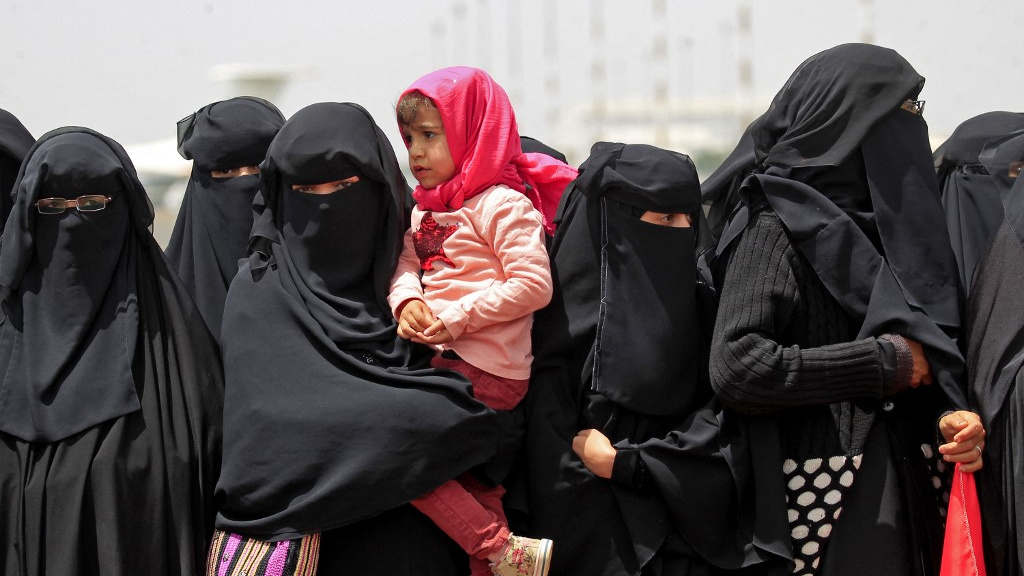Yemen is currently facing one of its worst humanitarian moments in recent history.
The cancellation of more than 80 percent of US foreign aid programmes, alongside cuts by other humanitarian donors, is having devastating ripple effects.
In Yemen, lifesaving programmes have been shut down, leaving cholera-prone communities without clean water and millions of people without access to basic healthcare. Under 10 percent of the $2.5bn needed this year for the Yemen humanitarian response has been funded.
Behind these statistics lies a hidden crisis: 6.2 million women and girls in Yemen are at risk of gender-based violence. But due to funding constraints, the UN’s revised 2025 humanitarian response plan aims to reach only around 1 percent of those in need.
Local organisations have reported being forced to shut down safe spaces, halt psychosocial care and suspend legal aid. These are not just service cuts. They represent the dismantling of a vital network of protection built over the years for and by Yemeni women.
New MEE newsletter: Jerusalem Dispatch
Sign up to get the latest insights and analysis on
Israel-Palestine, alongside Turkey Unpacked and other MEE newsletters
We need a broader conversation on this topic among a wider group of stakeholders, including donors and international non-governmental organisations, to recentre the leadership, expertise and solutions of Yemeni women-led and women’s rights groups.
Late last year, the International Rescue Committee (IRC) initiated a study to understand the challenges and barriers facing these women’s groups in Yemen, aiming to devise ways to build a more equitable system of funding and partnerships. The funding cuts this year have only heightened the sense of urgency to collaborate across organisations in pursuit of solutions.
Pushed to the brink
What emerged from conversations with a wide range of Yemeni women’s organisations was a clear warning: these groups are being pushed to the brink, with many left stranded after investing in projects that donors abruptly ended.
Amani, a local NGO representative whose name has been changed to protect her privacy, told us that women “travel for hours to reach a safe space, only to find an abandoned building because the funding ran out”.
Such closures reverse years of progress made under global humanitarian reform efforts such as the Grand Bargain and Pledge for Change. Both have called for aid to be more locally led and equitable. Yet now, many of the very organisations these initiatives sought to uplift face collapse.
Women’s organisations in Yemen are closest to the crisis, but furthest from the resources needed to address it
Women’s groups in Yemen do far more than deliver emergency aid. They offer holistic, long-term supports – from shelters, trauma counselling to legal services and skills building – helping women both survive and recover. They are embedded in communities, where international actors often struggle to operate. Their ability to navigate local norms and gain trust allows them to deliver services that are culturally sensitive and survivor-centred.
They are also drivers of long-term change. By working with community leaders and shaping social norms, they make space for conversations about gender-based violence in ways that others cannot.
And yet, despite their reach and effectiveness, they remain underfunded and frequently excluded from decision-making spaces.
Research led by the IRC found that these groups are too often treated as subcontractors rather than equal partners. They are expected to implement projects without shaping them. Short-term funding cycles, shortfalls in operational costs and exclusion from funding calls are all factors that contribute to making their work unsustainable.
Meeting this moment
This is not just a funding problem; it is a power imbalance. Women’s organisations in Yemen are closest to the crisis, but furthest from the resources needed to address it. Until that changes, the humanitarian response will continue to fail those most in need.
Solutions do exist – if we choose to act.
First, the power balance needs to shift. Donors and international NGOs must embed local women’s organisations in coordination and decision-making structures. Localisation is not about numbers; it is about who leads and who decides.
Second, funding systems require reform. Calls for proposals must be transparent, inclusive and accessible to grassroots groups. Budgets must account for core needs such as rent, security and staff salaries – not just direct project costs.

Yemen’s women bear the brunt of war. Their demand for peace must be heard
Read More »
Third, there is a need to invest in local capacity. Support should reflect the self-identified priorities of local women’s groups, rather than external metrics. Larger, well-established national groups should be resourced to mentor and elevate emerging organisations.
Fourth, there should be a concerted effort to foster peer collaboration, including cost-effective platforms for knowledge sharing, innovation and solidarity. This would help to sustain women-led responses as international NGOs scale down.
Finally, advocacy efforts must be strengthened. Women’s organisations need to be recognised not only as service providers but also as leaders. Their perspectives must shape policies, programmes and reforms.
In moments of crisis, the instinct is often to protect “core” services, but a response to gender-based violence is not optional. For more than six million women and girls in Yemen, it is essential. Women’s groups have long filled critical gaps, despite minimal resources. Imagine their impact if they were fully empowered as strategic partners and decision-makers.
This is not just a funding challenge. It is a test of whether the humanitarian system is serious about solidarity, equity and long-term change. We must rise to meet this moment with commitment, collaboration and courage.
The views expressed in this article belong to the author and do not necessarily reflect the editorial policy of Middle East Eye.

